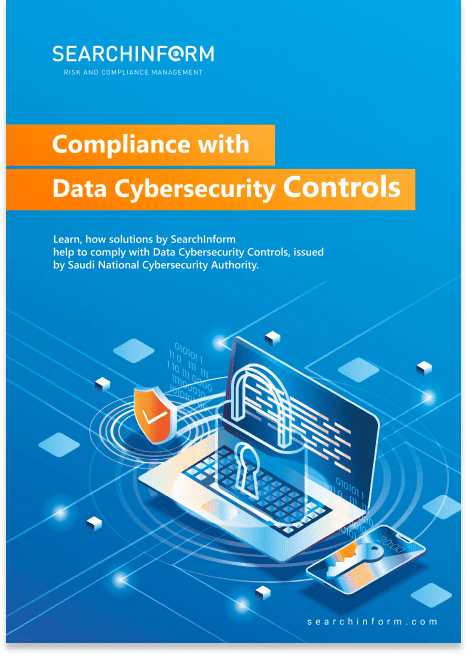Account Takeover: Comprehensive Guide to Prevention and Security
Introduction to Account Takeover
Imagine waking up one morning to find your bank account drained, your social media hijacked, and your personal information sold on the dark web. This is the terrifying reality of account takeover (ATO), a rapidly growing cyber threat where attackers gain unauthorized control over your online accounts, often before you even realize what's happening. In an era where so much of our lives is managed online, ATO has evolved into one of the most damaging forms of cybercrime, with increasingly sophisticated tactics that target both individuals and businesses alike.
Definition of Account Takeover (ATO)
Account takeover happens when a cybercriminal seizes control of someone’s online account by exploiting security flaws, weak passwords, or tricking users into handing over their credentials. Once inside the account, attackers can steal money, make unauthorized purchases, or use the account as a launchpad for further fraud. This type of attack not only affects individuals but can have severe repercussions for companies, leading to massive financial losses and eroded customer trust.
Historical Perspective of ATO Attacks
The concept of account takeover has evolved significantly over the years. In its earliest form, ATO attacks relied on simple tactics like password guessing or brute-force attacks. However, as online security measures improved, so did the methods of cybercriminals. Phishing campaigns became the weapon of choice in the 2000s, allowing attackers to trick victims into giving up their account credentials.
Fast forward to today, and we’re witnessing a new wave of ATO attacks. Hackers have become more sophisticated, using tactics like SIM-swapping, where they take control of a victim’s phone number to bypass two-factor authentication. The dark web has made things even worse by facilitating the sale of stolen login credentials, allowing attackers to launch automated attacks against thousands of accounts simultaneously.
Real-World Examples and Case Studies
Yahoo Data Breach (2013-2014)
The infamous Yahoo breach serves as a stark reminder of the scale and impact of account takeover attacks. Hackers managed to steal the credentials of over three billion Yahoo users, leading to widespread ATO incidents. Many users found that their email accounts had been compromised, giving attackers access to banking and social media accounts tied to the same email addresses.
PayPal Account Takeover (2020)
In 2020, PayPal experienced a security flaw that allowed attackers to bypass two-factor authentication. This vulnerability led to a series of ATO attacks, in which cybercriminals drained users' funds from their PayPal accounts. For many victims, the losses were not only financial but also emotional, as trust in the platform eroded.
Zoom ATO Attack (2020)
With the onset of the COVID-19 pandemic, Zoom became a prime target for account takeover fraud. Attackers used credential stuffing techniques to take control of Zoom accounts, often gaining access to sensitive meetings and private information. This event underscored the importance of securing not just financial accounts but any online platform that holds personal data.
These real-world examples illustrate how damaging account takeover attacks can be and why it’s crucial for individuals and organizations to remain vigilant in their cybersecurity practices.
Understanding the Mechanics of ATO
Account takeover (ATO) is not just a term thrown around in the cybersecurity world—it’s a complex and evolving cyber threat that exploits the weaknesses of both technology and human behavior. With the rise of digital transactions and online interactions, cybercriminals have refined their techniques to infiltrate accounts at an alarming rate. Whether it’s through sophisticated hacking methods or simple manipulation of human psychology, the mechanics of ATO attacks reveal a web of vulnerabilities that everyone needs to be aware of.
Common Methods Used in ATO
The success of account takeover attacks often hinges on a combination of methods, each designed to exploit different vulnerabilities in a system or human behavior. Understanding these methods is the first step in defending against them.
- Phishing: Phishing remains one of the most common entry points for ATO. In a phishing attack, cybercriminals deceive users into providing their login credentials by impersonating legitimate organizations. Victims may receive emails or messages with links to fake websites that look identical to real ones, leading them to unknowingly hand over their account information.
- Credential Stuffing: Another frequent method used in ATO attacks is credential stuffing, where attackers take advantage of stolen username-password combinations from data breaches. Since many people reuse passwords across multiple platforms, hackers use automated tools to test these credentials on different sites, quickly gaining unauthorized access if the credentials match.
- SIM-Swapping: A more targeted method, SIM-swapping, involves an attacker taking control of a victim’s mobile number by convincing the phone service provider to transfer the number to a new SIM card. This technique is often used to bypass two-factor authentication (2FA) measures, giving the attacker full control over the account.
- Malware: Malicious software, or malware, is another powerful tool in an attacker’s arsenal. Once installed on a victim’s device, malware can capture keystrokes, steal credentials, or grant the hacker remote access to the account, facilitating a seamless takeover.
The Role of Social Engineering
Account takeover attacks aren’t just about cracking codes or bypassing firewalls; they often rely heavily on social engineering. Social engineering exploits human weaknesses—such as trust, curiosity, or fear—rather than purely technical vulnerabilities.
- Impersonation: Attackers may pose as trusted figures, such as company executives, family members, or customer service representatives, to trick individuals into divulging sensitive information like login credentials.
- Emotional Manipulation: By crafting messages that evoke fear (e.g., claiming a bank account has been compromised) or excitement (e.g., fake lottery winnings), cybercriminals can push victims to act without considering the risks, leading to an easy account takeover.
The reliance on social engineering in ATO attacks makes them especially dangerous. Even the most secure systems can be breached if an individual is manipulated into handing over their credentials or unknowingly installing malware.
Automation in ATO Attacks
As ATO tactics have evolved, automation has become a central tool for cybercriminals. Automated tools allow attackers to carry out large-scale account takeover attempts in a short period, significantly increasing their chances of success.
- Credential Stuffing Bots: Automation plays a key role in credential stuffing attacks. Bots can quickly attempt login combinations across multiple websites, leveraging stolen credentials from past data breaches. Given the scale and speed at which these bots operate, they can compromise hundreds or even thousands of accounts in mere minutes.
- Brute-Force Attacks: Although less common due to improved password security, brute-force attacks are still automated attacks where bots systematically try different combinations of passwords until they find the correct one. While this method is time-consuming, weak passwords remain vulnerable to such attacks.
- Automated Phishing Kits: Automation has also entered the world of phishing. Phishing kits, available for purchase on the dark web, allow even low-level hackers to send out mass phishing emails or create phishing websites. These kits streamline the process, making it easier than ever for criminals to launch ATO attacks with minimal technical expertise.
By using automation, cybercriminals can carry out account takeover attacks with frightening efficiency. The ability to scale attacks means that even if only a small percentage of attempts are successful, the overall payoff can be substantial.
Account takeover is a dynamic and evolving threat that combines the art of manipulation with cutting-edge technology. Understanding the mechanics of ATO attacks—from phishing and credential stuffing to social engineering and automation—is essential in combating this growing threat. By staying vigilant and implementing strong security practices, individuals and organizations can better defend themselves against these increasingly sophisticated attacks.
Impact of Account Takeover on Businesses
Account takeover (ATO) attacks don’t just harm individuals—they can have devastating effects on businesses, no matter their size or industry. As attackers become more sophisticated in their methods, companies face mounting risks that extend far beyond financial losses. An ATO incident can shake customer trust, damage a brand’s reputation, and lead to significant legal ramifications. The consequences of an account takeover for businesses are far-reaching and often difficult to fully recover from.
Financial Implications
One of the most immediate and tangible consequences of account takeover is the financial damage it causes. Businesses may face direct financial losses as attackers gain access to accounts, execute fraudulent transactions, or manipulate company systems. This can lead to:
- Monetary Theft: Cybercriminals often transfer funds from compromised accounts or place orders using stolen credentials. For businesses, these fraudulent transactions can result in massive monetary losses, especially when multiple accounts are compromised at once.
- Operational Costs: In the aftermath of an ATO attack, businesses often have to allocate significant resources to investigating the breach, restoring security, and compensating affected customers. This can include everything from hiring forensic experts to issuing refunds, which quickly adds up.
- Regulatory Fines: Depending on the industry and region, businesses may face heavy fines if they fail to adequately protect customer accounts. Regulatory bodies often impose penalties for breaches of data protection laws, especially if it’s determined that the company was negligent in preventing the account takeover.
The financial toll of an ATO attack is not limited to immediate losses. Companies may also experience long-term financial strain as they invest in enhanced security measures and deal with the ongoing repercussions of the breach.
Reputational Damage
Perhaps even more difficult to quantify than financial losses is the reputational damage that businesses suffer after an account takeover incident. In today’s connected world, trust is everything. Customers expect their personal information to be safeguarded, and when businesses fail to meet that expectation, the damage can be irreparable.
- Loss of Customer Trust: Once an account takeover has occurred, customers may no longer feel secure using a business’s services. If a business can’t protect their sensitive data, customers will hesitate to continue the relationship, often switching to competitors who they perceive as more secure.
- Brand Image: The fallout from an ATO attack can lead to negative press coverage, social media backlash, and a tarnished public image. This can be particularly damaging for businesses that rely on their brand’s reputation to attract customers. Restoring public trust after an ATO breach is a difficult and lengthy process.
- Customer Attrition: In the competitive business landscape, an account takeover can drive customers away permanently. Once a customer’s account is compromised, the likelihood of them returning to a platform decreases drastically, especially if the company fails to communicate how they’re addressing the issue.
The reputational damage from an ATO attack can have a long-lasting impact, often extending well beyond the initial breach. In some cases, the trust lost after an account takeover is never fully regained, making prevention critical for any business.
Legal Consequences
In addition to financial and reputational fallout, account takeover attacks can also have serious legal consequences for businesses. With the rise of stringent data protection regulations worldwide, companies are held to higher standards when it comes to safeguarding customer information.
- Data Protection Laws: Laws like the General Data Protection Regulation (GDPR) in Europe and the California Consumer Privacy Act (CCPA) in the U.S. mandate strict security measures for protecting customer data. A failure to prevent an account takeover attack could result in regulatory scrutiny, lawsuits, and fines. Under these laws, businesses must report breaches within specific timeframes, and failure to comply can lead to significant penalties.
- Class Action Lawsuits: Following a large-scale ATO attack, businesses may face class action lawsuits from customers whose accounts were compromised. These legal battles can be costly, both in terms of financial settlements and the resources required to defend the company in court.
- Contractual Violations: Many businesses have contracts with partners or customers that include provisions for protecting sensitive information. An account takeover breach can violate these contracts, leading to legal disputes or the loss of critical business partnerships.
The legal consequences of account takeover attacks add another layer of complexity for businesses. Navigating the legal landscape after a breach requires time, money, and expertise, further compounding the damage caused by the initial attack.
Account takeover (ATO) attacks pose a multifaceted threat to businesses. From financial implications and reputational harm to legal consequences, the impact of an ATO breach can be both immediate and long-lasting. Businesses must take proactive steps to protect themselves and their customers from this growing threat, as the consequences of failing to do so can be catastrophic.
Detection of Account Takeover Attempts
In the rapidly evolving world of cybercrime, account takeover (ATO) attacks can often go unnoticed until significant damage has been done. Cybercriminals are continuously refining their methods, making it essential for businesses to proactively detect and respond to ATO attempts. Identifying these attacks early is crucial in mitigating their impact. By understanding the signs of account takeover, closely monitoring user behavior, and utilizing advanced anomaly detection systems, organizations can stay one step ahead of attackers.
Signs of ATO Attacks
The first line of defense against account takeover is recognizing the telltale signs of an attack. Cybercriminals often leave subtle clues behind, and while no single indicator is a definitive confirmation of an ATO attempt, spotting multiple red flags should raise concerns.
- Unusual Login Locations: One of the most common signs of account takeover is logins from unfamiliar geographic locations. If a user typically logs in from New York and suddenly their account shows access from Europe or Asia, it may indicate a compromised account.
- Multiple Failed Login Attempts: Attackers frequently use automated tools to guess passwords, resulting in multiple failed login attempts in a short period. This kind of activity is often a precursor to a successful ATO attack.
- Suspicious Changes to Account Information: Sudden changes to user details, such as email addresses, phone numbers, or passwords, without prior notification from the legitimate user, may indicate unauthorized access.
- Unusual Account Activity: Changes in purchasing patterns, unexpected fund transfers, or any behavior that deviates from a user's normal routine can be a sign of account takeover. Businesses should be alert to such anomalies, especially if they occur soon after a suspicious login.
Monitoring User Behavior
An effective way to detect account takeover attempts is by consistently monitoring user behavior. Attackers may gain access to an account, but their behavior is often different from that of the legitimate account owner. By establishing a baseline of normal activity for each user, businesses can identify deviations that could signal an ATO attack.
- Behavioral Analytics: Monitoring how users interact with a website or application can reveal discrepancies. For example, an attacker may rush through actions, such as making multiple high-value transactions in rapid succession, whereas legitimate users typically exhibit more measured behavior. Similarly, if a user suddenly accesses parts of the site they’ve never visited before, this could be a sign of suspicious activity.
- Device Fingerprinting: Monitoring the devices used to access an account can also help detect account takeover attempts. If a user suddenly logs in from an unknown or new device, especially in combination with other red flags, it could indicate that their account has been compromised.
- IP Address Monitoring: Keeping track of the IP addresses associated with user logins can help detect potential ATO attempts. Logins from high-risk regions or a series of IP addresses known for malicious activity can be a warning sign.
Monitoring user behavior plays a vital role in identifying an account takeover early on. By paying attention to how users normally engage with a service, businesses can spot unusual activity before it escalates.
Role of Anomaly Detection Systems
As cybercriminals become more sophisticated, manual monitoring alone is no longer sufficient to detect account takeover attempts. This is where anomaly detection systems come into play. These systems use machine learning and artificial intelligence (AI) to identify unusual patterns and behaviors that might indicate an ATO attack.
- Machine Learning Algorithms: Modern anomaly detection systems are equipped with machine learning algorithms that continuously learn from user behavior. These systems can detect minute deviations from normal patterns that human analysts might miss. For instance, a slight change in login speed, navigation, or transaction type could trigger an alert.
- Real-Time Alerts: One of the most significant benefits of anomaly detection systems is their ability to operate in real-time. Instead of waiting for a human to notice suspicious activity, these systems can instantly flag potentially compromised accounts, allowing security teams to respond immediately.
- Risk Scoring: Many anomaly detection systems use risk scoring to assess the likelihood that an account has been taken over. By analyzing various factors, such as login location, device type, and behavioral shifts, the system assigns a risk score to each session. High-risk scores can trigger additional security measures, such as multi-factor authentication (MFA) or temporary account lockdowns.
Advanced anomaly detection systems are becoming a crucial tool in defending against account takeover attacks. By leveraging the power of AI and machine learning, businesses can detect potential ATO attempts faster and more accurately, reducing the damage these attacks can cause.
The detection of account takeover attempts is a multifaceted process that requires businesses to be proactive. By recognizing the signs of ATO attacks, closely monitoring user behavior, and incorporating anomaly detection systems, companies can significantly reduce the risk of falling victim to these increasingly sophisticated threats.
Prevention Strategies for Account Takeover
Account takeover (ATO) attacks are a constant threat, but they are far from inevitable. With the right prevention strategies in place, businesses can significantly reduce their risk and protect both their users and their reputations. A proactive approach to cybersecurity, which includes multi-factor authentication (MFA), regular security audits, and thorough employee training, is essential in staying ahead of increasingly sophisticated attackers.
Implementing Multi-Factor Authentication (MFA)
One of the most effective ways to prevent account takeover is by implementing multi-factor authentication (MFA). Simply relying on passwords is no longer enough, as attackers have developed numerous ways to steal or guess them. MFA adds an extra layer of security by requiring users to verify their identity through multiple factors, such as a password, a fingerprint, or a one-time code sent to their mobile device.
- Strengthening User Authentication: MFA ensures that even if an attacker obtains a user's password, they still cannot access the account without the second form of verification. This drastically reduces the likelihood of a successful ATO attempt.
- Variety of Factors: MFA can use different combinations of verification, such as something the user knows (password), something the user has (smartphone), or something the user is (biometrics). This multi-layered approach makes it exponentially more difficult for attackers to gain access to an account.
- Combatting Credential Stuffing: As credential stuffing continues to rise, MFA becomes an essential tool in the fight against account takeover. Even if an attacker uses automated bots to try thousands of login credentials, the additional authentication factor will block unauthorized access.
The benefits of MFA in preventing account takeover are clear. Not only does it provide an added layer of security, but it also gives users confidence that their accounts are well-protected.
Regular Security Audits
Preventing account takeover requires more than just reactive measures—it demands ongoing vigilance through regular security audits. Security audits help businesses identify vulnerabilities in their systems and processes, ensuring that they remain secure against evolving threats.
- Identifying Weaknesses: Regular audits allow organizations to identify weak points in their security infrastructure before attackers exploit them. These audits can uncover outdated software, weak password policies, and unsecured access points, all of which are potential gateways for ATO attacks.
- Ensuring Compliance: Many industries are subject to strict regulatory requirements when it comes to cybersecurity. Regular security audits help ensure that businesses remain compliant with these regulations, reducing the risk of fines or penalties. More importantly, compliance with standards like GDPR or CCPA demonstrates a commitment to safeguarding user data.
- Evaluating Access Controls: An essential part of a security audit is evaluating how access controls are managed. Ensuring that only authorized personnel have access to sensitive information can significantly reduce the risk of an account takeover incident. Access reviews help maintain strict control over who can view or manipulate critical systems.
By conducting regular security audits, organizations can stay proactive in identifying and fixing security gaps, which ultimately reduces their exposure to account takeover attacks.

Employee Training and Awareness
Technology alone cannot fully protect businesses from account takeover attempts. Human error remains one of the most significant contributors to ATO attacks. Phishing schemes, social engineering, and careless handling of credentials are all common ways attackers gain access to accounts. Employee training and awareness programs are critical components of any ATO prevention strategy.
- Recognizing Phishing Attempts: Employees should be trained to recognize phishing emails and suspicious links. Since phishing is one of the most common ways attackers initiate an account takeover, educating employees on how to spot red flags can prevent compromised credentials from falling into the wrong hands.
- Strengthening Password Practices: Educating employees on proper password management is essential. This includes using strong, unique passwords for each account, enabling MFA, and avoiding the use of easily guessable information. Employee awareness of password security is key in stopping ATO attacks at the first line of defense.
- Incident Reporting: Employees should know how to respond to potential security incidents. Whether they receive a suspicious email or notice strange activity on their accounts, employees need clear protocols for reporting incidents. Quick reporting can prevent a minor breach from turning into a full-blown account takeover crisis.
A well-informed workforce is a company’s best defense against account takeover. Regular training and reinforcement of best practices can significantly reduce the risk of human error leading to a security breach.
Account takeover attacks are becoming more sophisticated, but businesses can protect themselves by taking a proactive stance. Implementing multi-factor authentication, conducting regular security audits, and fostering employee awareness all play vital roles in preventing ATO. With these measures in place, businesses can reduce their vulnerability and ensure that accounts remain secure from unauthorized access.
Best Practices for Maintaining Account Security
With cybercriminals continually devising new methods to launch account takeover (ATO) attacks, maintaining robust account security has never been more critical. Businesses and individuals alike must implement a combination of best practices to safeguard their accounts from unauthorized access. Key components include effective password policies, regular software updates, and securing data through encryption. These strategies, when implemented correctly, form a strong defense against the growing threat of ATO attacks.
Password Policies and Management
Strong password management is one of the foundational steps in preventing account takeover attempts. Cybercriminals often rely on weak or reused passwords to infiltrate accounts, making it essential for businesses and individuals to adopt strict password policies.
- Enforcing Strong Passwords: One of the simplest yet most effective ways to protect accounts is to enforce strong password requirements. Passwords should be long, complex, and include a combination of letters, numbers, and special characters. Weak passwords are an open invitation for cybercriminals to launch brute-force or credential stuffing attacks, which are common methods in ATO attempts.
- Password Management Tools: Encouraging the use of password management tools can significantly reduce the risk of password-related breaches. These tools not only generate strong, unique passwords for each account but also securely store them, preventing users from relying on easily guessable credentials. Using these tools is an essential strategy in mitigating account takeover risks.
- Avoiding Password Reuse: Many ATO incidents occur because users recycle the same password across multiple platforms. Once attackers obtain login credentials from one breach, they can use them to gain access to other accounts. A strict policy that prohibits password reuse and promotes the use of password managers can drastically reduce the likelihood of this kind of attack.
A well-thought-out password management policy is one of the easiest ways to mitigate the risk of account takeover. By fostering good habits and providing the right tools, businesses can protect themselves from common entry points used by cybercriminals.
Regular Software Updates and Patches
While password policies are critical, they aren’t enough on their own. To further strengthen defenses against account takeover attempts, regular software updates and security patches are essential. Cybercriminals often exploit outdated software or known vulnerabilities to breach accounts and compromise systems.
- Patching Vulnerabilities: Software vulnerabilities can act as gateways for attackers looking to execute ATO attacks. By keeping all software—especially security software—up to date, businesses can close these gateways before attackers have a chance to exploit them. Regularly patching systems ensures that even if an ATO attack is attempted, the potential for success is greatly reduced.
- Automating Updates: One of the most effective ways to maintain up-to-date software is to automate updates wherever possible. By automating this process, businesses ensure they are always running the latest security patches, reducing the chances that outdated software becomes an entry point for attackers.
- Addressing Third-Party Risks: Third-party software can often introduce vulnerabilities that lead to account takeover incidents. Businesses must ensure that all third-party applications and systems connected to their infrastructure are regularly updated and meet security standards. Ignoring these risks can leave a backdoor open for cybercriminals to exploit.
Regular updates and patches are crucial in fortifying account security. By proactively addressing vulnerabilities and automating updates, organizations can reduce their exposure to ATO threats.
Data Encryption and Secure Storage
Even with strong passwords and updated software, protecting stored data from cybercriminals is essential in preventing account takeover. Encryption and secure data storage practices add a vital layer of security, making it nearly impossible for attackers to make use of compromised data.
- Encrypting Sensitive Data: Encryption converts data into unreadable formats, protecting it from unauthorized access. Even if cybercriminals manage to breach a system and gain access to sensitive information, encryption ensures that the data remains unusable without the proper decryption keys. This makes encryption a powerful tool in the fight against ATO attacks.
- End-to-End Encryption: Businesses should implement end-to-end encryption to protect sensitive data throughout its journey, whether it's in transit or at rest. This method ensures that only the sender and receiver can access the data, reducing the risk of interception by attackers who aim to execute account takeover attacks.
- Securing Data in the Cloud: With the increasing use of cloud storage, it’s essential to ensure that data stored in cloud environments is properly encrypted and secured. Many ATO incidents stem from weakly protected cloud accounts. Strong encryption protocols, combined with secure access controls, help to mitigate the risks of unauthorized access and account takeover in cloud environments.
Implementing encryption and secure storage practices adds a crucial layer of defense, ensuring that even if attackers breach an account, the data remains protected and difficult to exploit.
Maintaining account security requires a comprehensive approach that addresses all potential vulnerabilities. Strong password management, regular software updates, and robust data encryption practices are essential in safeguarding accounts from ATO attacks. These best practices provide the protection needed to keep accounts secure in an increasingly hostile digital landscape.
Future Trends in Account Takeover
As the digital landscape continues to evolve, account takeover (ATO) attacks are becoming more sophisticated, adaptive, and harder to detect. Cybercriminals are constantly developing new techniques to bypass security measures, and advancements in technology are both fueling and combating these threats. To stay ahead, it’s essential to understand the future trends in ATO, how emerging technologies like AI and machine learning are shaping this threat, and what businesses and individuals can do to prepare for future attacks.
Emerging ATO Techniques
In the ongoing arms race between cybercriminals and security professionals, new account takeover techniques are emerging that leverage more advanced tactics. These evolving methods take advantage of the ever-expanding digital footprint left by users and organizations, making it easier for attackers to infiltrate accounts without detection.
- Synthetic Identities: One of the rising trends in ATO is the use of synthetic identities, where cybercriminals create fake identities by combining real and fabricated information. These synthetic identities are used to create new accounts, which can later be hijacked or leveraged for financial gain. As these identities become more convincing, they are increasingly difficult to detect.
- Deepfake Attacks: The growing use of deepfake technology is giving attackers the ability to convincingly impersonate individuals in video or audio form, facilitating account takeovers in new ways. For example, cybercriminals can use deepfake audio to deceive bank officials or security teams into believing they are interacting with the real account holder.
- SIM-Swapping 2.0: While SIM-swapping is not new, attackers are finding more innovative ways to exploit this technique. In the latest versions of SIM-swap attacks, cybercriminals are using advanced social engineering techniques and targeting mobile carrier employees to gain access to phone numbers, which can then be used to bypass two-factor authentication (2FA).
These emerging ATO techniques are designed to outpace traditional security methods, making it crucial for businesses to stay vigilant and continuously upgrade their security protocols.
The Role of AI and Machine Learning in ATO
As artificial intelligence (AI) and machine learning (ML) technologies continue to advance, they are playing a dual role in account takeover attacks. While these technologies are used by security teams to detect and prevent ATO, cybercriminals are also exploiting AI and ML to enhance their attacks, making the threat more sophisticated than ever.
- Automated ATO Attacks: Machine learning algorithms are enabling attackers to automate ATO attempts at an unprecedented scale. Using bots powered by AI, cybercriminals can launch automated credential stuffing or brute-force attacks that test thousands of login credentials in seconds. These AI-driven attacks are faster and harder to detect than traditional methods, overwhelming security systems designed to monitor manual login attempts.
- AI-Enhanced Phishing: AI is also being used to make phishing attacks, a key enabler of account takeover, more convincing and personalized. With AI-driven tools, attackers can scrape personal data from social media and other platforms to craft highly targeted phishing emails that are difficult to distinguish from legitimate communication.
- Defense Against ATO: On the defensive side, machine learning is being integrated into security platforms to identify suspicious behavior patterns that might indicate an account takeover attempt. These systems can detect anomalies in user behavior, such as sudden changes in login location or unusual transaction patterns, and flag them for further investigation. AI-powered security systems are also getting better at differentiating between legitimate users and bots, reducing the success rate of automated ATO attempts.
AI and machine learning are reshaping the ATO landscape, making it imperative for businesses to adopt advanced technologies to combat the growing sophistication of these attacks.
Preparing for Future Threats
As account takeover techniques evolve and cybercriminals continue to innovate, preparing for future threats requires a forward-thinking approach to security. The key to staying ahead of ATO lies in adapting to emerging trends, adopting advanced technologies, and fostering a culture of cybersecurity awareness.
- Investing in AI-Driven Security Solutions: As attackers increasingly rely on AI and machine learning, businesses must do the same. Investing in AI-driven security solutions that can detect and respond to ATO attempts in real time is critical to defending against these rapidly evolving threats. Predictive analytics powered by machine learning can help identify vulnerabilities before they are exploited, giving organizations a proactive edge.
- Strengthening Identity Verification: With the rise of synthetic identities and deepfake technologies, traditional forms of identity verification may no longer be sufficient. Implementing multi-layered identity verification methods, such as biometric authentication or behavioral biometrics, can add an extra layer of security that is harder for attackers to bypass.
- Continuous Employee Training: Human error remains one of the leading causes of account takeover. As phishing attacks and social engineering tactics become more advanced, continuous training for employees is essential. Regularly updating staff on the latest ATO trends and reinforcing best practices for handling sensitive data will help mitigate the risks associated with these attacks.
The future of account takeover is unpredictable, but by staying informed about emerging techniques and investing in advanced security technologies, businesses and individuals can be better prepared to defend against the next generation of ATO threats.
SearchInform Solutions for Account Takeover Prevention
As the threat of account takeover (ATO) grows more prevalent, businesses need comprehensive solutions that can stay ahead of attackers. SearchInform, a leading provider of data security and risk management solutions, offers a suite of tools designed to address the evolving challenges of account takeover. By combining advanced technologies with robust monitoring capabilities, SearchInform’s solutions are tailored to prevent ATO attacks before they can inflict damage on businesses or their customers.
Real-Time Monitoring and Alerts
One of the most critical aspects of preventing account takeover is the ability to detect suspicious activity in real time. SearchInform’s solutions provide continuous monitoring of user activity, identifying any abnormal behavior that could indicate an ATO attempt.
- Behavioral Analysis: By tracking normal user behavior patterns, SearchInform can detect sudden deviations that suggest a compromised account. Whether it’s an unexpected login from a foreign location or a rapid series of failed login attempts, the system flags these activities immediately, allowing security teams to intervene before an account is fully taken over.
- Anomaly Detection: The platform utilizes machine learning algorithms to detect anomalies that traditional security measures might miss. This could include unusual transaction patterns, unexpected changes to account settings, or sudden spikes in account activity—common signs of an ongoing account takeover attempt.
- Automated Alerts: SearchInform’s real-time alert system ensures that any suspicious activity is immediately reported to security teams, enabling a rapid response. By acting on these alerts quickly, businesses can minimize the damage caused by an ATO and secure the affected accounts.
Incident Response and Investigation Tools
Should an account takeover attempt slip through the cracks, rapid incident response is crucial to minimize its impact. SearchInform equips businesses with the tools they need to swiftly investigate and respond to ATO incidents.
- Comprehensive Auditing: SearchInform’s solutions maintain detailed logs of all user activity, making it easier to trace the origins of a suspected account takeover. These audit logs allow security teams to understand how the breach occurred, identify the compromised accounts, and take corrective action.
- Incident Reporting: The platform also includes an automated incident reporting feature that generates detailed reports on any security breaches. These reports provide valuable insights that help businesses refine their security protocols and prevent future ATO attacks.
- Forensic Analysis: In the event of a large-scale account takeover, SearchInform’s forensic analysis tools help businesses reconstruct the attack. By analyzing compromised systems and tracking attacker movements within the network, organizations can strengthen their defenses and prevent similar breaches from occurring in the future.
Data Encryption and Secure Storage
Ensuring that sensitive data remains protected, even in the event of an account takeover, is another essential part of SearchInform’s security solutions. By leveraging encryption and secure storage practices, SearchInform ensures that stolen data is unusable without proper decryption keys.
- End-to-End Encryption: All sensitive information is encrypted both in transit and at rest, preventing cybercriminals from exploiting stolen data. Even if an attacker successfully takes over an account, SearchInform’s encryption ensures that the information within the account remains protected.
- Role-Based Access Controls (RBAC): To limit the damage that a compromised account can cause, SearchInform enables role-based access controls. This ensures that users only have access to the data necessary for their role, preventing attackers from reaching sensitive information even if they manage to take over an account.
SearchInform’s multi-faceted approach to account takeover prevention empowers businesses to stay ahead of increasingly sophisticated ATO attacks. By combining real-time monitoring, advanced authentication methods, and incident response tools, SearchInform helps organizations protect their accounts and secure their sensitive data from unauthorized access.
Protect your business from the rising threat of account takeover with SearchInform’s advanced security solutions. Stay ahead of cybercriminals with real-time monitoring, robust authentication, and comprehensive incident response tools to safeguard your accounts and sensitive data.
Extend the range of addressed challenges with minimum effort

Subscribe to our newsletter and receive a bright and useful tutorial Explaining Information Security in 4 steps!

Subscribe to our newsletter and receive case studies in comics!







